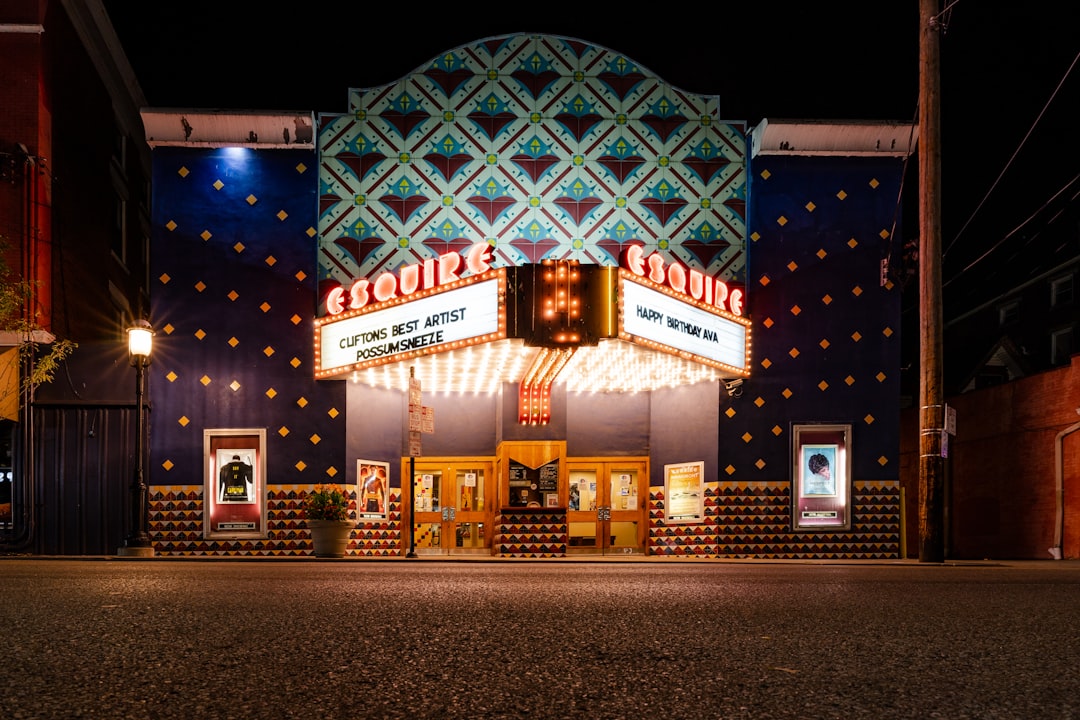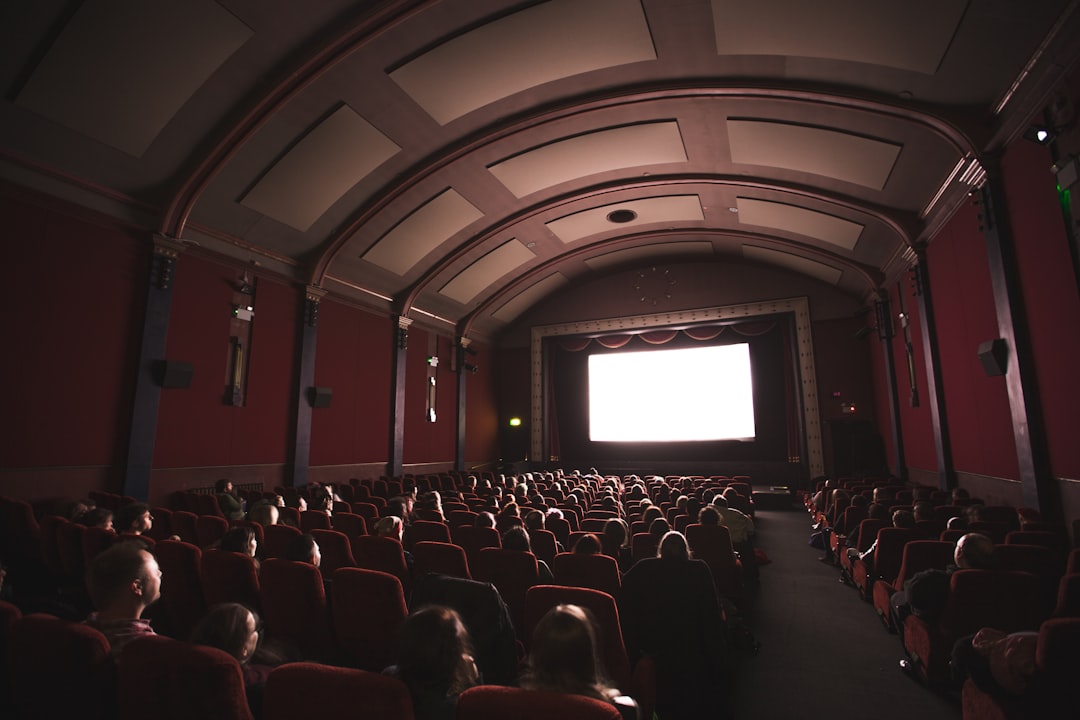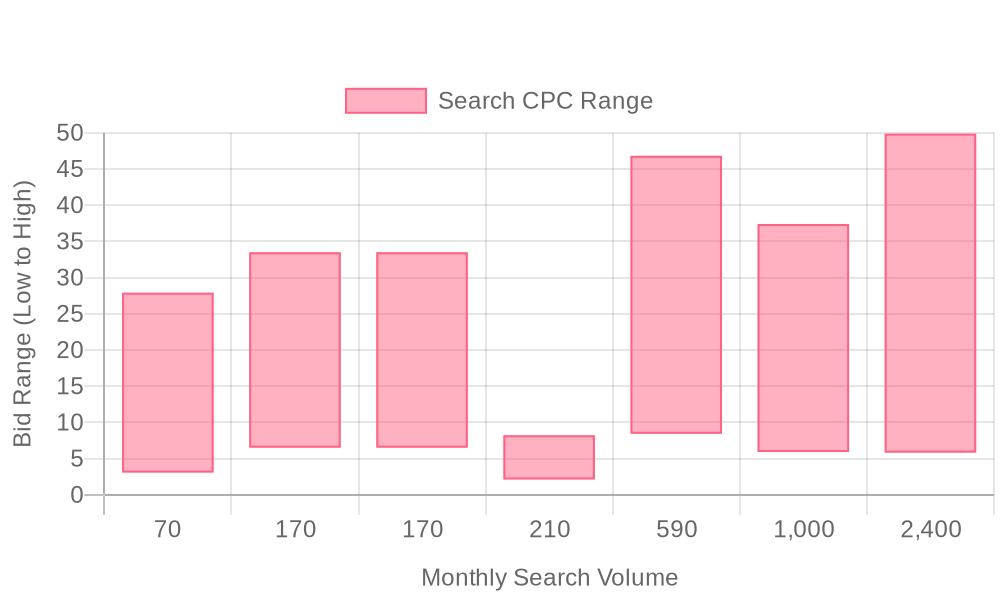
Supercharge your lead generation with a FREE Google Ads audit - no strings attached! See how you can generate more and higher quality leads
Get My Free Google Ads AuditFree consultation

No commitment
Supercharge your lead generation with a FREE LinkedIn Ads audit - no strings attached! See how you can generate more and higher quality leads
Get My Free Google Ads AuditFree consultation

No commitment
Supercharge your lead generation with a FREE Meta Ads audit - no strings attached! See how you can generate more and higher quality leads
Get My Free Google Ads AuditGet My Free LinkedIn Ads AuditGet My Free Meta Ads AuditFree consultation

No commitment
Supercharge your lead generation with a FREE Google Ads audit - no strings attached! See how you can generate more and higher quality leads
Get My Free Google Ads AuditFree consultation

No commitment
In today's competitive cinematic landscape, reaching the right audience for a movie release is both an art and a science. Disparate results from traditional advertising methods show that one-size-fits-all approaches often waste budget without finely tuned targeting. Therefore, leveraging Google Ads for movie advertising presents a unique opportunity to capture the attention of potential moviegoers precisely when they're looking for entertainment options. Advanced tools now allow businesses to segment audiences and customize campaigns by demographic and viewing behaviors, ensuring greater relevance. The integration of advanced targeting, video ad opportunities, and data-rich analytics bridges the gap between cinematic storytelling and audience engagement. Let’s explore how you can effectively employ Google Ads as part of your film marketing playbook.

Driving ticket sales and building strong audience anticipation requires more than just visually compelling trailers. Today’s successful movie advertising strategies rely on precision targeting, real-time engagement, and actionable insights that connect campaigns to the right audiences at every stage.
Google Ads for Movie Advertising empowers marketing teams to go beyond guesswork, unifying first-party and third-party data to tailor messaging, maximize channel consistency, and capture demand from high-intent moviegoers. By integrating advanced audience intelligence and automated workflows, marketers can transform anonymous clicks into qualified leads, sync online and offline performance for comprehensive attribution, and dynamically update audiences as prospects move through the funnel.
This step-by-step guide outlines how to align your Google Ads campaigns with broader film marketing objectives. It covers advanced keyword strategies, creative best practices, high-intent targeting, continuous optimization, and seamless integration with CRM and offline data sources. Each stage is designed to help revenue teams drive measurable ROI, personalize engagement, and ensure that every ad dollar accelerates box office results. Ready to see impactful results? Get started for free with Sona.

Modern film marketing thrives on data-driven, cross-channel campaigns that reach audiences where they are most engaged. Google Ads for movie advertising enables studios and distributors to connect with targeted segments at key decision points, maximizing visibility for trailers, showtimes, and exclusive events. For deeper insights on optimizing your digital movie promotions, explore this guide on marketing films and TV shows.

Each campaign type serves a distinct function within the digital marketing for films ecosystem, from capturing search-driven demand to nurturing long-tail interest with tailored follow-up. Integrating advanced audience identification and real-time intent insights enables revenue teams to execute movie advertising strategies that are both efficient and deeply personalized. Want to see how these strategies can work for you? Get started for free with Sona.

Modern movie advertising demands a strategy that extends far beyond traditional media placements. Leveraging digital channels not only unlocks new audiences but also delivers the actionable insights needed to optimize every marketing dollar. For hands-on tactics and best practices, explore this comprehensive guide to marketing films and TV shows online. Marketers looking to unify insights across campaigns can find additional strategies in the Sona blog.
Ready to take your movie marketing to the next level? Get started for free with Sona.

Movie advertising relies on precise audience segmentation to drive engagement and ticket sales. Effective segmentation ensures every campaign reaches the right viewers with messaging tailored to their moviegoing motivations. For marketers looking to maximize their impact, leveraging real-time audience segmentation helps deliver creative assets that truly resonate. For deeper insights on online film marketing tactics, explore this comprehensive guide to marketing films and TV shows online.

| Industry | Keyword | Monthly Search Volume | Competition Level | Low Bid | High Bid |
| Movie Advertising | movie theater advertising companies | 70 | LOW | 3.09 | 27.91 |
| Movie Advertising | cinema advertising cost | 170 | LOW | 6.52 | 33.5 |
| Movie Advertising | movie theater advertising cost | 170 | LOW | 6.52 | 33.5 |
| Movie Advertising | movie marketing agencies | 210 | LOW | 2.13 | 8.23 |
| Movie Advertising | movie theater advertising | 590 | LOW | 8.44 | 46.82 |
| Movie Advertising | movie advertising | 1000 | LOW | 5.92 | 37.41 |
| Movie Advertising | amazon prime video ads | 2400 | LOW | 5.84 | 49.88 |
A precise keyword strategy is critical for effective Google Ads for movie advertising. Applying a granular approach enables campaigns to reach high-intent audiences, drive qualified traffic, and minimize wasted spend. For a comprehensive breakdown of essential strategies, explore this ultimate guide to marketing films and TV shows online.
When platforms unify campaign data, marketers can see which keyword themes convert best by segment, adjust bids in real time, and dynamically update negative keyword lists as search trends evolve. Integrating CRM and ad platforms ensures that high-value audience segments sync seamlessly, letting campaigns pivot quickly as new premieres approach or audience behaviors shift. This systematic keyword management drives optimal ROI and keeps campaigns aligned with evolving moviegoer intent. To experience these benefits firsthand, get started for free with Sona.
Effective Google Ads for movie advertising start with granular keyword segmentation. Segmenting by movie genre, such as action, drama, or comedy, allows marketers to precisely address audiences most likely to engage, especially when combined with location modifiers like city or neighborhood names. This localized focus increases ad relevance and ensures that campaigns only reach those within a realistic radius of a theater. For a comprehensive look at online marketing tactics, explore this guide to marketing films and TV shows online.
Using long-tail search queries, such as "upcoming film releases near me" or "best family movies this weekend in [city]," captures high-intent searchers actively planning their movie-going experience. When these audience lists are dynamically updated based on real-time behavior and CRM data, marketers can ensure their budgets prioritize audiences showing the strongest purchase intent. Sophisticated platforms can enrich these lists by identifying anonymous visitors and mapping them to target accounts, providing movie advertisers with a competitive edge in audience precision.
Ad copy for movie campaigns must do more than simply inform; it should resonate emotionally and differentiate the film experience. Highlighting unique selling points—such as top critic reviews, major festival selections, or appearances by headline actors—builds anticipation and intrigue. Adding urgency around showtimes or limited screenings can further motivate immediate action.
Personalization is key. By leveraging data from CRM and previous campaign engagement, advertisers can tailor messaging for different user segments, such as frequent moviegoers, families, or fans of a particular genre. When platforms enable automated audience sync, these tailored segments are always up to date, ensuring that ad copy remains relevant and compelling at every touchpoint. For actionable tips on driving high-impact campaigns, see this intent-driven retargeting playbook.
A seamless landing page experience is essential for converting interest into ticket sales. Pages should load quickly, be optimized for mobile, and feature clear calls to action, such as "Buy Tickets Now" or "See Showtimes Near You." Presenting real-time showtime information and available seating improves the user journey and reduces abandonment rates. See this step-by-step PPC strategy for movie theaters for additional landing page best practices.
Integrating advanced tracking into landing pages allows marketers to attribute ticket sales to specific campaigns, keywords, or audience segments—including those that originate offline. This level of attribution, especially when synced with CRM and sales platforms, gives teams a full view of ROI and enables ongoing optimization of both creative and spend. Learn more about measuring marketing’s influence on the sales pipeline to ensure every touchpoint is accounted for.
Optimizing campaigns for movie advertising requires more than routine adjustments. Implementing smart bidding strategies, such as Target CPA or ROAS, allows marketers to maximize conversions while controlling costs at each phase of the buyer journey. These bidding tactics can be automatically adjusted based on real-time signals like location, device, and audience engagement, ensuring that ads are served to users who are most likely to convert. Google provides a detailed overview of video ad campaigns and bidding features that can help you tailor your approach.
With real-time intent data feeding into campaign management, marketers can swiftly shift budget toward high-converting audiences as soon as they show in-market behavior. This dynamic approach also enables continuous testing of creative, landing pages, and calls to action, driving incremental improvements. Platforms that seamlessly sync enriched audience segments and conversion data across Google Ads and CRM systems empower revenue teams to close the loop between ad spend and actual ticket sales, resulting in precise, actionable insights that optimize every dollar invested. To experience these capabilities firsthand, get started for free with Sona.
Film marketers seeking a competitive edge benefit from holistic, multi-channel campaigns that keep messaging cohesive while reaching viewers across platforms. Integrating consistent creative narratives across social media, email, display, and YouTube ensures every touchpoint builds and reinforces audience interest in upcoming releases or theater experiences. Explore actionable marketing strategies for film on the Sona blog or get practical guidance from this online marketing guide for films and TV shows.
Harnessing Google Ads for movie advertising delivers unique advantages for audience targeting and campaign agility. Unlike static placements, Google Ads enables marketers to deploy dynamic keyword strategies that evolve as movie buzz builds or wanes. Using enriched first-party data, marketers can pinpoint not just anonymous site visitors, but actual ticket buyers and engaged fans—enabling more granular audience building and conversion tracking across online and offline channels.
Incorporating advanced tactics like AI-driven optimization and seamless CRM-to-ad sync, teams can automatically update lookalike audiences, suppress converted users, and retarget high-value prospects wherever they interact. These capabilities drive measurable gains in campaign efficiency, allowing marketers to shift budget in real time toward the creatives and segments delivering the highest conversion rates. This data-driven approach transforms movie advertising from guesswork into a scalable, performance-focused discipline that continuously adapts to audience signals and evolving market trends. To see how these tools can elevate your results, get started for free with Sona.
In conclusion, leveraging Google Ads for movie advertising can be a game-changer in reaching the right audiences and maximizing your film’s visibility. By strategically targeting your audience, optimizing ad performance, and utilizing the right tools, you can ensure that your movie captures the attention it deserves.
Throughout this article, we have explored the essential strategies for effectively using Google Ads to promote movies. From understanding audience behavior to crafting compelling ad content, these insights are designed to enhance your marketing efforts and drive results. By addressing these core challenges, you can transform your advertising approach and achieve greater success.
The power of digital advertising lies in its ability to connect storytellers with audiences in innovative ways. Embrace the possibilities that Google Ads presents, and watch as your film's reach expands beyond traditional boundaries. With the right approach, you can create a buzz that resonates and captivates viewers worldwide.
Ready to elevate your movie advertising strategy? Start for free to experience our platform and its capabilities today. Let's transform your vision into reality and ensure your movie gets the spotlight it deserves.
Best practices include precision targeting, real-time engagement, and leveraging advanced audience intelligence to tailor messaging and maximize channel consistency.
You can target specific audiences by using advanced segmentation and intent signals to reach cinema enthusiasts actively searching for new releases, trailers, and showtimes.
Search campaigns, display ads, video ads, and remarketing campaigns are effective for promoting films on Google, each serving distinct functions to capture demand and nurture interest.
Success can be measured using Google Ads’ robust analytics, which tie ad spend directly to ticket sales and in-theater actions, offering insights through multi-touch attribution.
The budget allocation should focus on high-intent audiences and be optimized in real-time based on performance data and audience engagement to ensure efficient ad spend.
Join results-focused teams combining Sona Platform automation with advanced Google Ads strategies to scale lead generation

Connect your existing CRM

Free Account Enrichment

No setup fees
No commitment required

Free consultation

Get a custom Google Ads roadmap for your business
Join results-focused teams combining Sona Platform automation with advanced Meta Ads strategies to scale lead generation

Connect your existing CRM

Free Account Enrichment

No setup fees
No commitment required

Free consultation

Get a custom Google Ads roadmap for your business
Join results-focused teams combining Sona Platform automation with advanced LinkedIn Ads strategies to scale lead generation

Connect your existing CRM

Free Account Enrichment

No setup fees
No commitment required

Free consultation

Get a custom Google Ads roadmap for your business
Join results-focused teams using Sona Platform automation to activate unified sales and marketing data, maximize ROI on marketing investments, and drive measurable growth

Connect your existing CRM

Free Account Enrichment

No setup fees
No commitment required

Free consultation

Get a custom Google Ads roadmap for your business
Over 500+ auto detailing businesses trust our platform to grow their revenue
Join results-focused teams using Sona Platform automation to activate unified sales and marketing data, maximize ROI on marketing investments, and drive measurable growth

Connect your existing CRM

Free Account Enrichment

No setup fees
No commitment required

Free consultation

Get a custom Google Ads roadmap for your business
Over 500+ auto detailing businesses trust our platform to grow their revenue
Join results-focused teams using Sona Platform automation to activate unified sales and marketing data, maximize ROI on marketing investments, and drive measurable growth

Connect your existing CRM

Free Account Enrichment

No setup fees
No commitment required

Free consultation

Get a custom Google Ads roadmap for your business
Over 500+ auto detailing businesses trust our platform to grow their revenue
Our team of experts can implement your Google Ads campaigns, then show you how Sona helps you manage exceptional campaign performance and sales.
Schedule your FREE 15-minute strategy sessionOur team of experts can implement your Meta Ads campaigns, then show you how Sona helps you manage exceptional campaign performance and sales.
Schedule your FREE 15-minute strategy sessionOur team of experts can implement your LinkedIn Ads campaigns, then show you how Sona helps you manage exceptional campaign performance and sales.
Schedule your FREE 15-minute strategy sessionOur team of experts can help improve your demand generation strategy, and can show you how advanced attribution and data activation can help you realize more opportunities and improve sales performance.
Schedule your FREE 30-minute strategy sessionOur team of experts can help improve your demand generation strategy, and can show you how advanced attribution and data activation can help you realize more opportunities and improve sales performance.
Schedule your FREE 30-minute strategy sessionOur team of experts can help improve your demand generation strategy, and can show you how advanced attribution and data activation can help you realize more opportunities and improve sales performance.
Schedule your FREE 30-minute strategy sessionOur team of experts can help improve your demand generation strategy, and can show you how advanced attribution and data activation can help you realize more opportunities and improve sales performance.
Schedule your FREE 30-minute strategy session





Launch campaigns that generate qualified leads in 30 days or less.
